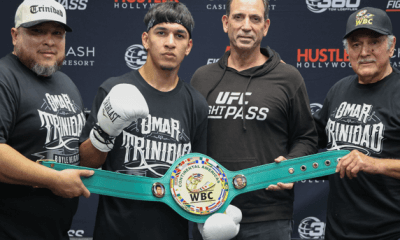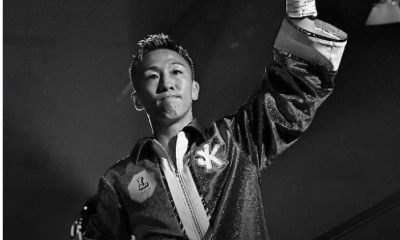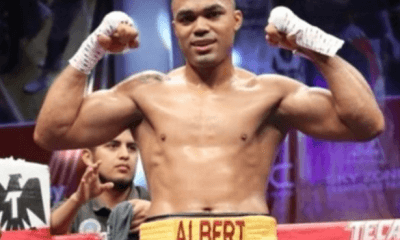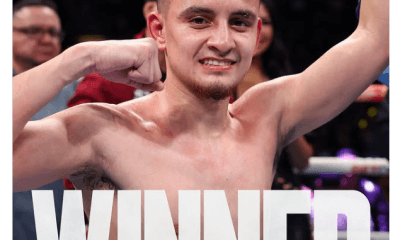Featured Articles
Results from Riyadh: Dubois, Kabayel, Opetaia, Hrgovic and Sanchez Victorious
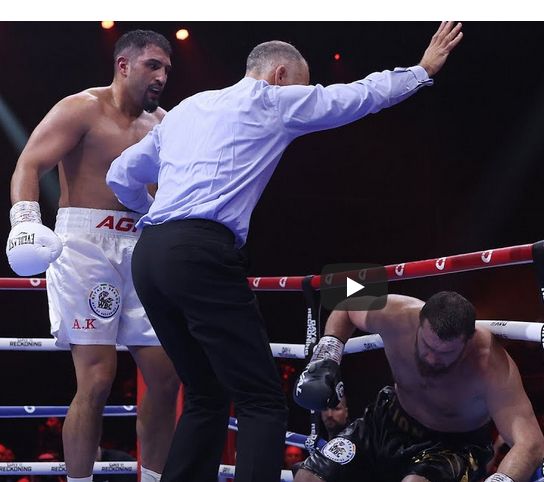
The first five fights are in the books on the mammoth “Day of Reckoning” card in Riyadh, Saudi Arabia. All five ended inside the distance although the bout between Daniel Dubois and Jarrell “Big Baby” Miller came within a whisper (a mere eight seconds) of lasting until the final bell.
Daniel Dubois was comfortably ahead through nine frames and could have gone on his bicycle to sew up the “W.” But, he cranked up the juice and put Miller in a bad way and the referee was right to step in and stop it.
At age 26, Dubois was the younger man by nine years, but he was out-weighed by 94 pounds by a man known for a strong engine and a sturdy chin. There were fireworks in round two although neither man went down, but from that point on it was a battle of attrition and Miller gradually became more and more exhausted. Fighting off his back foot until the tenth and final round, Dubois landed many more punches against a foe who pushed the pace but had no lateral mobility. The Londoner improved to 20-2 with his nineteenth knockout. This was the first pro loss for “Big Baby” (26-1-1) who entered the contest on a 22-fight winning streak.
Kabayel
After three predictable outcomes to open the show, Agit Kabayel upset the odds with a fourth-stoppage of Arslanbek Makhmudov. The referee waived off the one-sided beatdown at the 2:05 mark of round four.
A German of Iranian descent who has seemingly been around forever although he is only 31 years of age, Kabayel was undefeated heading in (23-0, 15 KOs) but something of the forgotten man in the heavyweight division after fighting only seven times in the last six-plus years. Listed at six-foot-three but plainly shorter, Kabayel proved to be a lot quicker than his heavy-handed but ponderous 34-year-old adversary. After a strong third round, Kabayel took the starch out of the Montreal-based “Russian Lion” with a series of body punches. He had Makhmudov down twice before the referee waived it off.
It’s back to the drawing board for the previously undefeated (18-0, 17 KOs) Makhmudov who opened an 8/1 favorite.
Opetaia
Jai Opetaia cemented his status as the top cruiserweight on the planet with a brutal, one-punch, opening round knockout of England’s unsung Ellis Zorro. A sweeping left hook knocked Zorro on his back, his head resting on the lower strand of ring ropes, out cold. The end came with four seconds remaining in the first frame.
A teenage Olympian for Australia in 2012, Opetaia (24-0, 19 KOs) was the lineal cruiserweight champion before being defrocked by the IBF earlier this week for bypassing a mandatory rematch with Maris Briedis to take this assignment. His promoter Eddie Hearn is confident that the Aussie will follow the path of Oleksandr Usyk, eventually winning all four belts at 200 pounds before moving on to the heavyweight division. It was the first pro loss for Zorro (17-1).
Hrgovic
As expected, Filip Hrgovic (17-0, 14 KOs) made short work of 41-year-old Australian no-hoper Mark De Mori whose record coming in (41-2-2) was both legitimate and fraudulent (his last four opponents had 97 losses between them). The fight was over in 106 seconds.
A big right hand sent De Mori stumbling into the ropes and falling to his knees. The Aussie got up and threw a couple of haymakers in Hrgovic’s direction, but turned his back on the Croatian after eating a few more punches, forcing the referee to intervene as Hrgovic punched down on him.
Rated #1 by the IBF, Hrgovic is in line to fight the winner of the forthcoming unification fight between Oleksandr Usyk and Tyson Fury set for Feb. 17 in Riyadh. As that fight has a rematch clause, it’s likely that Hrgovic will be compelled to go in a different direction.
Sanchez
In the first of the eight bouts, Frank Sanchez (24-0, 17 KOs) scored a seventh-round stoppage of New Zealand’s Junior Fa (20-3) who lost for the third time in his last four starts, the exception coming against a fighter with a losing record.
This match heated up in the sixth frame after five dull rounds. Sanchez, who had three-time TSS Trainer of the Year Eddy Reynoso in his corner, put Fa on the deck in the waning seconds of the sixth with a big right hand and finished the job in the next stanza. Fa was on the deck twice more before the fight was waived off. The official time was 2:42 of round seven.
Daniel Dubois vs. Jarrell “Big Baby” Miller set the stage for Dmitry Bivol’s WBA world light heavyweight title defense against Lyndon Arthur and the co-features involving Anthony Joshua and Deontay Wilder in separate bouts. Check back shortly for recaps of those fights.
To comment on this story in the Fight Forum CLICK HERE
-

 Featured Articles3 weeks ago
Featured Articles3 weeks agoThe Hauser Report: Zayas-Garcia, Pacquiao, Usyk, and the NYSAC
-

 Featured Articles2 weeks ago
Featured Articles2 weeks agoOscar Duarte and Regis Prograis Prevail on an Action-Packed Fight Card in Chicago
-

 Featured Articles1 week ago
Featured Articles1 week agoThe Hauser Report: Cinematic and Literary Notes
-

 Book Review4 days ago
Book Review4 days agoMark Kriegel’s New Book About Mike Tyson is a Must-Read
-
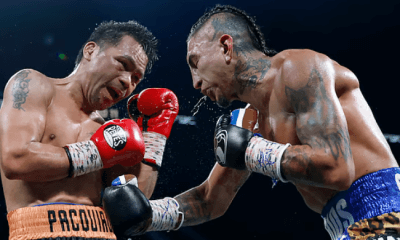
 Featured Articles4 weeks ago
Featured Articles4 weeks agoManny Pacquiao and Mario Barrios Fight to a Draw; Fundora stops Tim Tszyu
-
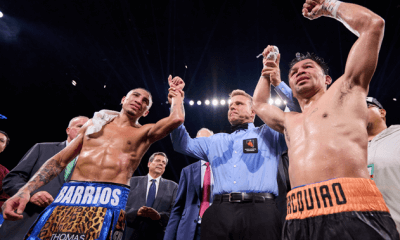
 Featured Articles4 weeks ago
Featured Articles4 weeks agoArne’s Almanac: Pacquiao-Barrios Redux
-

 Featured Articles3 weeks ago
Featured Articles3 weeks agoRemembering Dwight Muhammad Qawi (1953-2025) and his Triumphant Return to Prison
-
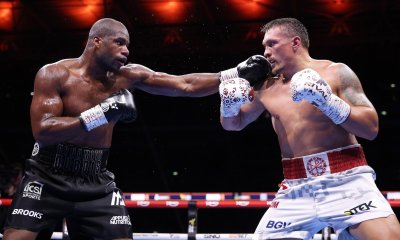
 Featured Articles4 weeks ago
Featured Articles4 weeks agoOleksandr Usyk Continues to Amaze; KOs Daniel Dubois in 5 One-Sided Rounds


